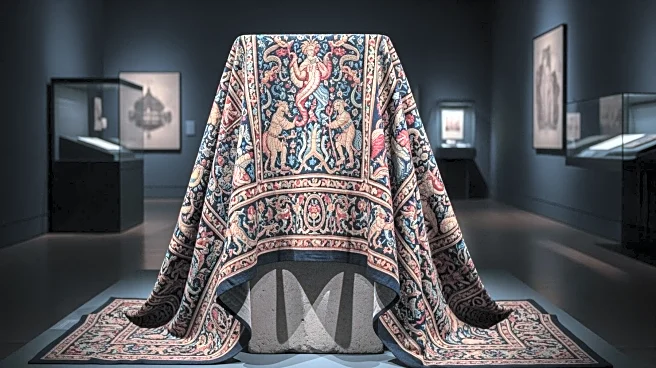What's Happening?
Norwich Castle Museum has successfully recreated a fabric from the tomb of Bishop Walter Lyhert, who was buried in 1472. The project involved piecing together tiny silk fragments from the bishop's ceremonial
robe, discovered in 1899 during building works at Norwich Cathedral. The recreated fabric showcases the original's red and purple colors and intricate designs, including monograms and floral patterns. The project is part of a £23 million redevelopment of the Norman keep at Norwich Castle, with collaboration from Norwich Cathedral and Gainsborough Silk Weaving.
Why It's Important?
The recreation of the fabric offers insights into historical textile craftsmanship and religious symbolism. It highlights the importance of preserving cultural heritage and the role of museums in educating the public about historical artifacts. The project also demonstrates the collaboration between institutions and experts in textile conservation, contributing to the broader field of heritage preservation. The recreated fabric serves as a tangible connection to the past, enriching the cultural narrative and offering new opportunities for public engagement.
What's Next?
Norwich Cathedral plans to use the recreated fabric to make ceremonial cloaks for clergy, bringing the fabric back to its original context. The museum will display the fabric alongside original fragments, rotating them to prevent deterioration. A limited amount of the recreated silk will be available for purchase, allowing visitors to own a piece of history. The project may inspire further research and conservation efforts in textile heritage.
Beyond the Headlines
The project raises questions about the ethical considerations of recreating historical artifacts and the balance between preservation and accessibility. It also highlights the potential for interdisciplinary collaboration in heritage projects, combining historical research, scientific analysis, and artistic craftsmanship.













